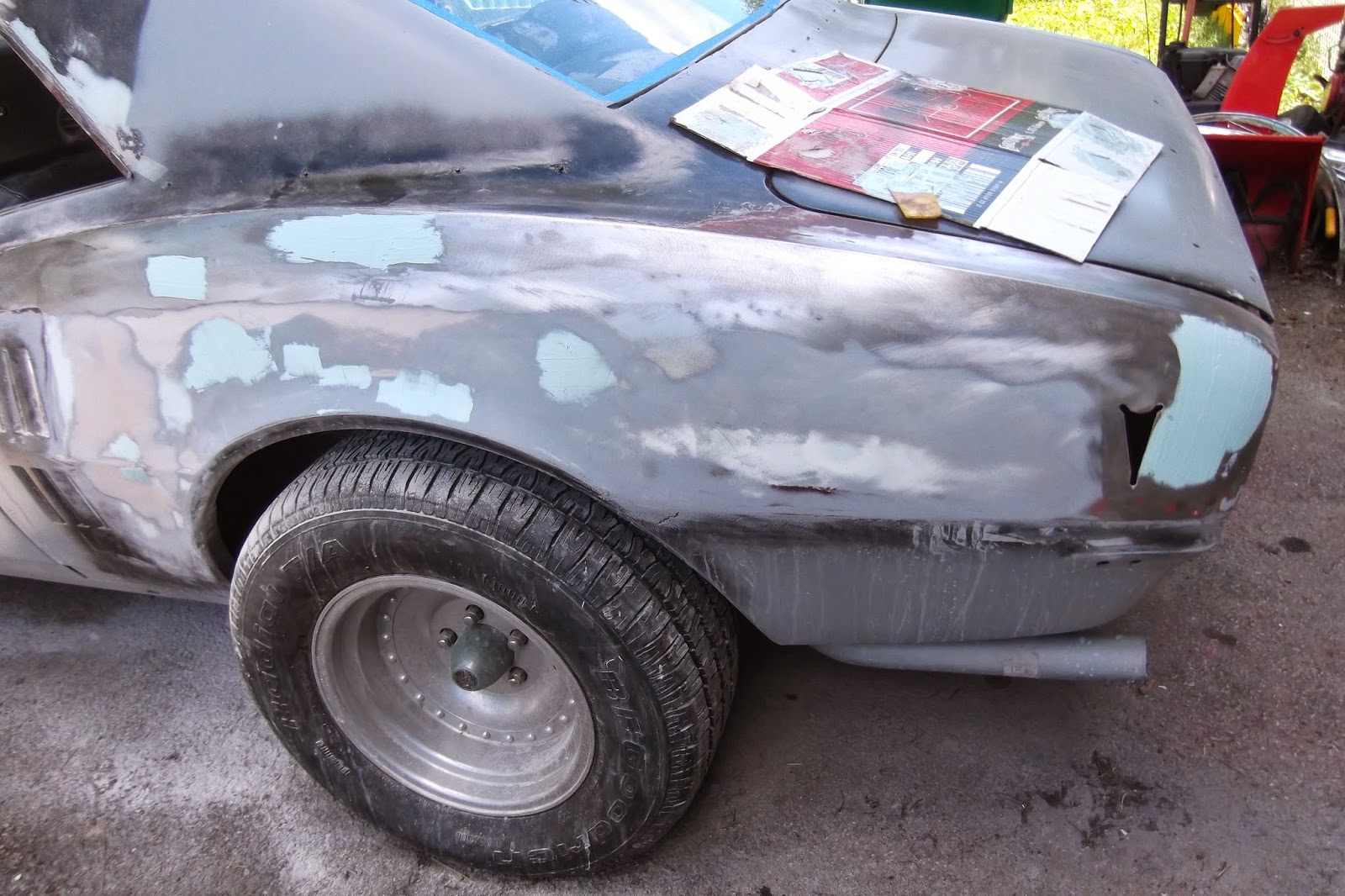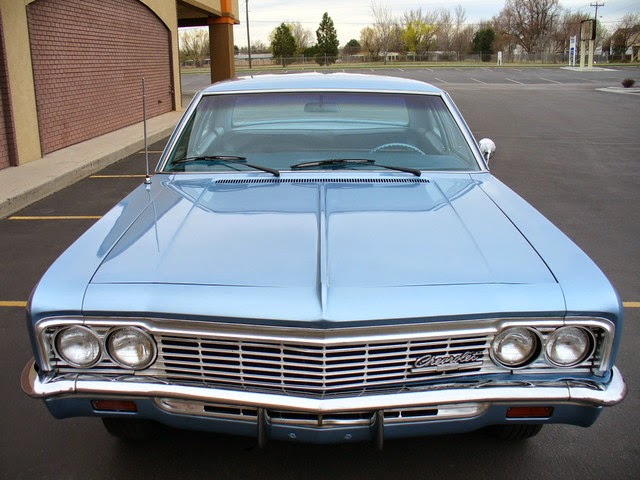Introduction:
I regret
that Hot Rods in the Hudson Valley is a bit of a dead link, so I thought I
would at least leave something helpful on here as my legacy:
The Premise:
Over the
years I have heard some extremely complicated methods about how to set lifter
lash. But does it really have to be that complicated?
The very
simple method I have used for years is as follows:
1. We will be working on the #1
cylinder. Each piston will be at TDC twice in a four stroke motor. We want to
find the TDC where compression is occurring. Put a breaker bar on the damper
bolt, and bring the motor around to just before 0 degrees on the damper. Put
your thumb (or someone else’s thumb) over the open spark plug hole as you are
doing this. If you feel air trying to push out, this is the compression stroke.*
The compression stroke is what we want. *Please
do not put anything INTO the cylinder. You could quickly lose a finger-tip I am
serious.
2. Loosen (or install) the rockers on
cylinder #1. I spin the pushrods between your fingers, one at a time, while
tightening the rocker, until the pushrod has some resistance to turning easily.
Then turn the rocker adjusting nut ½ turn more, and then tighten the locknut
fully.
3. Turn the motor in 90 degrees
increments, each time repeating the process for the next cylinder in the
firing-order. The Chevy firing order is one of the few things I have memorized
years ago.
This has
seemed to work acceptably for as long as I have done it. But few I people will
accept it. I guess it’s too simple to be right. It just has to be a complicated,
50-step procedure to be right, right?
I decided to
find out what my method does, both by thinking logically about it, and then directly
inspecting what actually happens in a motor.
Inspection of available data:
Now I know that the lifter has to be on the cam
base circle when the lash is set, it cannot be on the lobe ramp. This makes
sense to me; the base
circle is a known dimension. The ramps will cause the lifter height to vary.
This seems intuitive enough that I get it. So I want to find a cam position
when both lifters will be on the base circle!

The above
cam-lift graph illustrates what is a typical cam is doing. We will read the
graph (in a very simplified fashion) from left to right. Note that the -360
line and the 360 line are the same line; the cycle repeats over and over.
Hopefully.
Moving left
to right; the red curve is where the exhaust valve is working. Then the blue
curve is where the intake is working (Yes, there is a short time where they are
both open, this does not concern us).
So on the ends of the graph, from about 270 to
360 on the right, and -360 to
-270 on the left, both valves are closed. Of course they are closed; this is
when compression, spark, and the power event are happening!
Use some logic, how could these happen with the valves not fully closed? Ok, so
we have established almost 180 continuous degrees where the valves are closed.
A second inspection
of data:

The above
illustration is a representation of the end view of a physical pair of cam lobes
that would control the lifters in a cylinder. Again, this cam will rotate 1
revolution clockwise in the time the piston has traveled up and down 2 times.
Visualize a
second lifter behind the one shown.
As the cam
rotates, the exhaust lifter will come down to the base circle. Around that
time, the intake lifter will go up and back down on the (blue) intake cam lobe.
Notice the period after that, during D and A. The valves are both fully closed!
Of course they are, look at the notation for D. Compression is just beginning.
Now by
looking at this illustration, I estimate a way more conservative 90 degrees of
both valves being closed. It bothers me a little that I don’t know how to
reconcile the 90 degree difference between the 2 graphs, but even using just 90
degrees, that’s a lot.
Now right in
the middle of that time; both valves closed, compression stroke, TDC, is when I
am doing my lifter adjustment.
Do you think
my method could be out more than 45 degrees in either direction? I don’t.
Objections:
I will now
address some objections you might raise:
1. That’s a wimpy cam chart. What about
a super-duper, ultra-high-lift, I’m-a-real-man, drag racing cam?
Go ahead and
look up the biggest racing roller cam chart and check it. There will still be
plenty of degrees where both valves are closed. A compression motor kind of
relies on it. Do you know a motor where the valves are open during compression,
spark, and power? Does this motor run?
2. What about spark advance? Motors don’t
spark at TDC, they spark way before TDC.
It is true
that the spark event should occur earlier than compression TDC. The cylinder
explosion takes time to fully happen, and yes, it must be triggered earlier as
engine speed increases, since it takes about the same time to occur. But the
spark event is completely independent of lifter adjustment. Think about it;
everything we have discussed so far is damper degrees, cam degrees, lobes, etc.
The cam is physically connected to the crank (and thus the damper) by the
timing chain. This relationship is never changed. Spark should occur at an
optimum time, but you could change it to any time and it will not affect the
damper to cam to lifter relationship. It just can’t. Don’t be confused about
this.
3. Well you’re describing adjusting
hydraulic cam lifters; this is not the same as adjusting solid or roller cam
lifters.
This is just
an extension of the first objection. The physical steps performed during step 2
above will be more complex for adjusting solid and roller cams (if you have
one, you already know this). This is because instead of eliminating excess play
(or lash) as described for hydraulic, for solid or roller cams one must
actually make sure that a measured and controlled looseness (or clearance) is
present. I did not feel the need to explain that level of complication to those
that don’t know about it, since again, it just doesn’t matter! All cams will
have the lifters on the base circle during compression, spark, and power
events.
4. I have my cam advanced/retarded, so
my TDC is different than yours.
Really? That’s
great. Do you have it advanced or retarded more than 22 degrees? (see Physical
inspection below) I don’t think so.
Physical inspection of a motor:
I spent a
very cold afternoon today huddled over my big block in the garage doing some
real-world examination. The motor is out, on a stand. I recently changed intake
manifolds, and I was going to take the manifold back off to do my verification.
The coldness being what it was, I just left it on and decided I could watch the
upper ends of the pushrods just as easily to see lifter movement. I set up a
dial-indicator to measure lifter movement. I ran the damper around plenty of
times, carefully watching the lifter movement periods.
I didn’t take
any photos since they would just be static photos showing the positions of
things and would not be real exciting. Plus it was really cold.
The lack of pushrod
movement confirmed my ideas about the lifters being on the base circle during
TDC. There was an estimated 45 degree dwell time where the lifters just don’t move.
I don’t know the reason for the reduction in base circle degree dwell time
again, but I think my premise is still valid. I could not be off by 22 degrees
in either direction.
Future plans:
This spring
I will get a degree wheel on there, and my dial indicator in place, and do a
full 720 degree study of both lifters on cylinder #1, complete with exciting photos.
Your comments
are welcome.

































